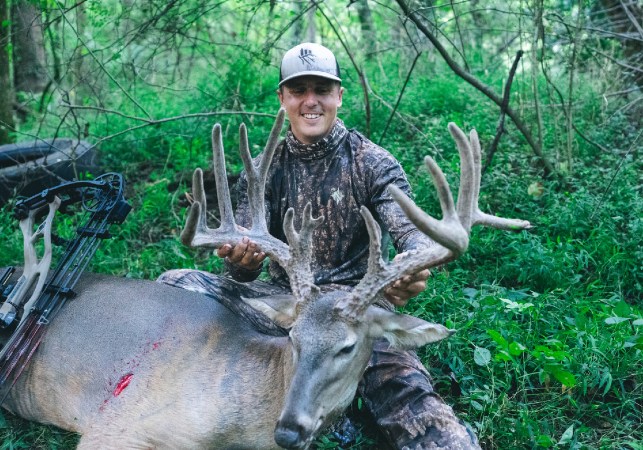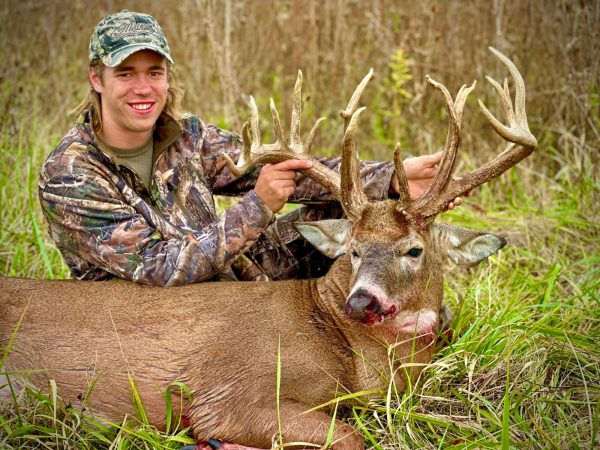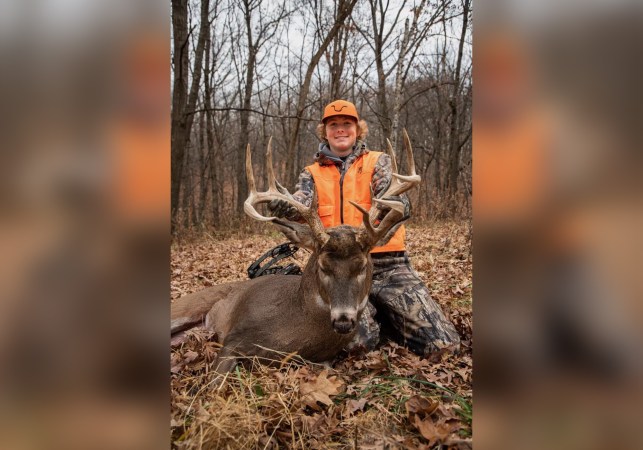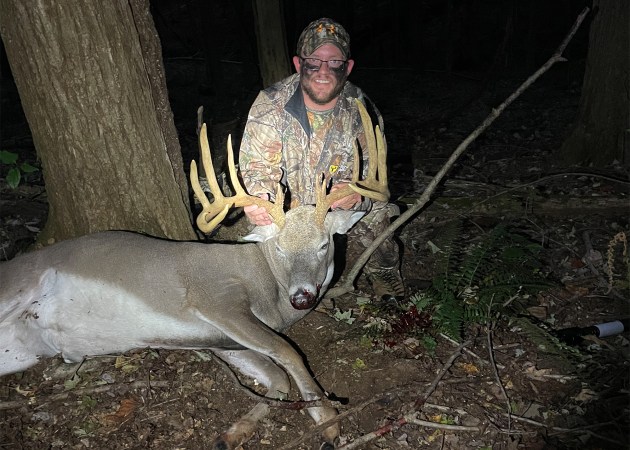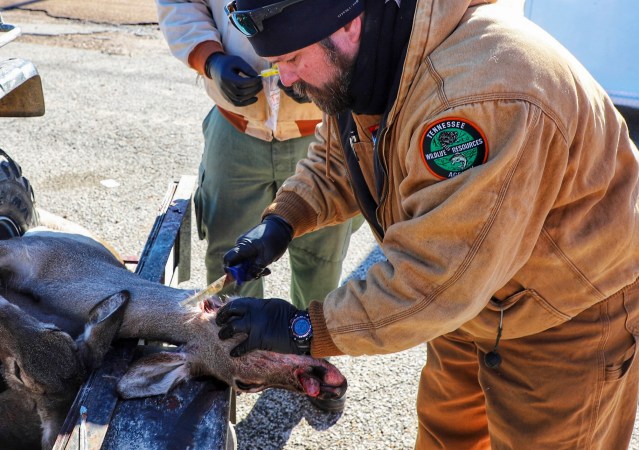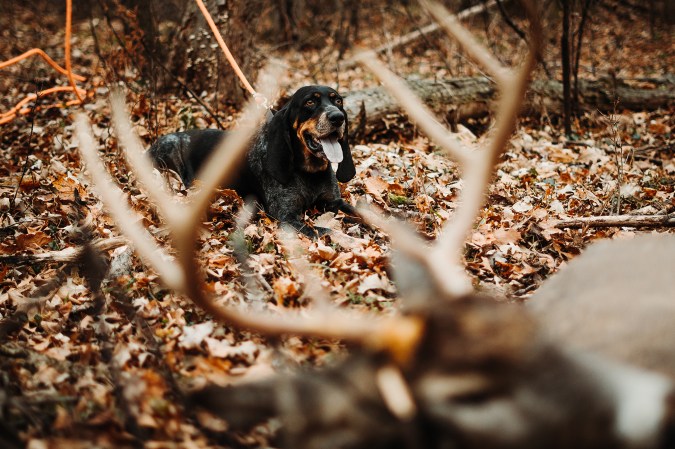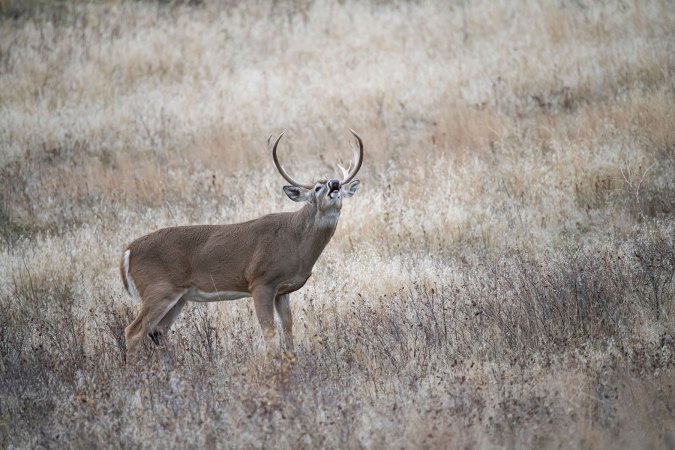Mike Potter has hunted his 160-acre property in Atchison County, Kansas for the last 10 years. He’s tagged a buck every year, even though he now has to travel there from his home in Byron Center, Michigan. This season, he killed his best buck yet, and he did it on a hot, muggy day when most hunters would have stayed at home.
“If I still lived in Kansas, I wouldn’t even have bothered hunting that day because it was so hot,” Potter tells Outdoor Life. “But we only had a week to hunt, so we kept at it.”
Potter says that he, his father Larry, and his friend Kevin Beer hunted the property during the first week of November, which is typically prime time. But this year was different.
“The rut is always during the first week of November, and that’s when I time my hunt,” he says. “But this year it was way too warm in early November. Conditions were just awful.”

The week before, Potter explains, a cold snap had kicked off an earlier-than-usual rut. But they were greeted at deer camp by 75-degree weather and a warm south wind. Potter says the bucks were in “lockdown” mode as they stayed bedded down with the does they’d corralled the previous week.
“We saw almost no bucks those first few days,” Potter says.
On the morning of Nov. 6, the three hunters headed out, and once again, the warm weather kept deer activity to a minimum. They met back at the cabin for lunch and then returned to their tree stands.
Potter got in his 18-foot-high ladder stand at 2 p.m. He was set up near a pond that was close to a known bedding area, and sometime around 5 o’clock that evening, a lone buck walked out of the woods and over to the pond for a drink.
Read Next: 35 Pieces of Deer-Hunting Wisdom to Read Before You Hunt This Season
“I’d put scent on my boots that morning, and when the buck finished drinking, he put his nose to the ground and followed my steps right to my open shooting lane at 30 yards,” Potter says. “I thought he’d surely scent me, but he was steady on that trail, nose to the ground.”
The buck made a scrape, then passed behind some trees on the way toward Potter’s shooting lane. Potter drew back his compound bow, and when the deer stepped into the opening, he released. Fixed with a two-blade mechanical broadhead, the arrow hit the deer right behind the shoulder.
“I saw my arrow in flight because it had a lighted nock, and I knew the shot was good,” Potter says. “The deer ran downhill into a thick dry creek bed, and I heard him fall.”
After walking out to where the deer had been standing, Potter found his arrow and then backed out of the area. He met up with his dad and friend back at camp, and they returned to the dry creek bed, where they recovered the buck with an ATV.
Read Next: Pennsylvania Crossbow Hunter Tags Giant 18-Point Buck with a Little Help from His Friends
Potter says they estimated the buck’s live weight around 200 pounds. His taxidermist gave it an unofficial green score of 171 4/8 inches.
“It’s the best deer I’ve ever taken,” Potter says. “Why that huge buck was cruising and headed to the pond for a drink is a mystery. But it sure shows that you can’t kill a deer by staying in camp on a couch.”
Potter’s approach was the right one, according to whitetail expert Dr. Grant Woods. Since the rut revolves around photoperiod, or the amount of sunlight in a given day, temperature shouldn’t factor too much into the decision to hunt or not hunt.
“Even if it’s 80 degrees, but the prom only happens once where you hunt, it’s still going to happen [during a warm front],” Woods tells Outdoor Life. “If [fawns are] born too early, they’re going to fall into a snowbank and they’re not going to make it. And if they’re born too late they’re not going to gain enough weight before the next winter and they’re not going to make it. So the system is pretty refined over a long time. The rut is going to happen at the same time [locally, every year].”






